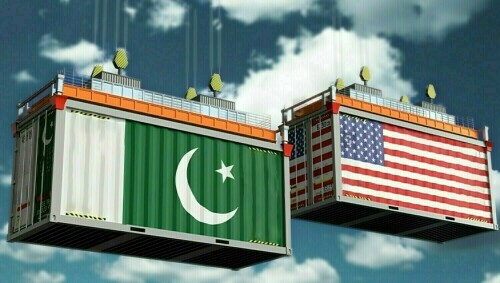Pakistan Risks Losing Export Advantage Despite Low US Tariffs
Pakistan is at risk of squandering its advantage in exports to the United States, despite having the lowest tariff rates in the region, according to Atif Ikram Sheikh, President of the Federation of Pakistan Chambers of Commerce and Industry (FPCCI). He cited elevated energy expenses and manufacturing inefficiencies as the primary threats.
The United States has set its reciprocal tariff rate on goods from Pakistan at 19%. This contrasts favorably with the 20–25% tariffs levied on regional rivals such as Bangladesh, Vietnam, and Sri Lanka.
India, a major competitor, faced a 50% tariff after the US President issued an executive order, adding 25% tariffs to the existing 25% on Indian goods.
“The US has enforced the lowest tariff in the region on products originating from Pakistan,” Atif Ikram Sheikh stated, urging authorities to fully capitalize on this opportunity, according to a statement released on Thursday.
However, he cautioned that Pakistan’s elevated production costs, compared to other regional nations, could negate this advantage.
“Taxes, elevated electricity rates, and gas prices for the industry are significant barriers to leveraging these low tariffs,” Sheikh noted, pressing the government to take swift action to address these issues and reduce energy costs for the industrial sector.
He suggested that a substantial increase in exports to the US, particularly in textiles, is feasible with reduced production costs.
The US administration has reportedly reached an understanding with Pakistan, where Washington will collaborate with Islamabad to develop Pakistan’s oil reserves.
The former US president conveyed on social media, “We have just concluded a Deal with the Country of Pakistan, whereby Pakistan and the United States will work together on developing their massive Oil Reserves.”
Islamabad has characterized the agreement as indicative of a broader collaboration with Washington. The Finance Minister, who spearheaded the final discussions, mentioned a comprehensive economic and strategic agreement.
The US is Pakistan’s largest trade partner, and the President of FPCCI emphasized that “This golden opportunity should be seized.”
He underscored the necessity of investment in the export sector, advocating for a conducive environment for Foreign Direct Investment in Pakistan. He concluded, “Low tariffs, single-digit interest rates, sustainable policies, and long-term planning are the solution to the problems.”



Comments (0)
No comments yet. Be the first to comment!
Leave a Comment